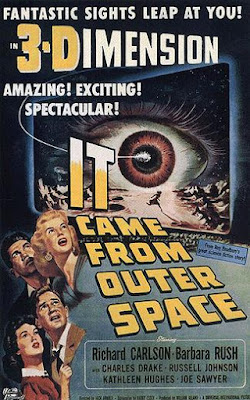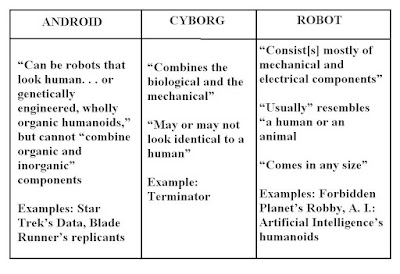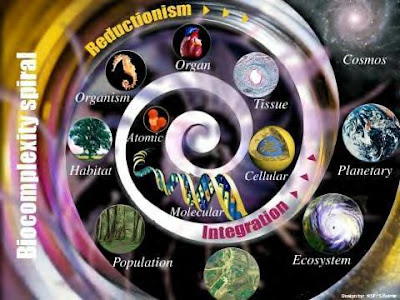Copyright 2011 by Gary L. Pullman
Horrific sex is about domination and submission, about control and being controlled, about power and powerlessness, about pleasure and pain, about joy and misery, about elevation and degradation. Its fulcrum is neither love nor affection, but power. It is the use and abuse of another human being--not only sexually, but also physically and emotionally--for one’s own purposes. It is the reduction of a person to a thing and the use of him or her as a means to the end of satisfying one’s own psychosexual needs and desires.
H. R. Giger’s art is horrific because it depicts such behavior. In his nightmarish biomechanical worlds, men and women--mostly women--are cyborgs--part human and part machine, and their situations (and their postures) are indicative of their degradation and humiliation. Indeed, the very purpose of Giger’s art seems to portray, as starkly as possible, the abject nature of fleshly incarnation, of the fleshly aspects of human existence, of the body that houses the soul. It is in the flesh that humanity is lost; it is in flesh that the animal within is to be found--except that, in Giger’s art, even the flesh and the animality of human existence is transformed; it is reduced to an even lower level, that of the mineral and the mechanical. In Giger’s art, free will is denied in favor of the mechanistic and the material, the mechanical and the determined. At best, people (mostly women) are what is leftover of them--half faces, half bodies, partial personalities, all immersed in a mechanical apparatus that is greater than themselves, in which they are, quite literally, mere cogs in a machine.
When a face does appear, amid the wires and cords, plates and pipes, tubes and gears, hose connectors and clamps, presses and compressors, motors and switches, the eyes usually show only their whites. The irises are missing, signifying, perhaps, the agony or the death of the individual enmeshed in the machinery. Emphasis, in general, is given to the sex organs--breasts, vagina, buttocks, anus, penis, and testicles--the animal parts of men and (mostly) women. These organs are hooked into the machinery or, in some cases, have become one with the machines of which they are part, penises becoming pistons, vaginas sockets, breasts dome-shaped lids with nuts instead of nipples.
Paradoxically, it is humanity itself who has manufactured the machinery that enslaves men and women, that dehumanizes them, that humiliates them. Human beings have created of the natural world a hell on earth, wherein they have reduced themselves, along with nature, to something lower than the beasts. They have become one with, and part and parcel of, their machinery, as determined and soulless as the engines that perform ambiguous functions without direction or, it appears, purpose. Having been set in motion, they do whatever task they have been designed to do--usually something, in Giger’s art, that is as horrific as it is bizarre and absurd. The human (mostly female) cogs in his machinery are there, it seems, mostly to be raped, tortured, and possibly killed. This is the earth that we have made, Giger’s work suggests; this is the world as we would have it to be, not a garden of Eden but a nightmarish mechanical world in which we are not the image and likeness of God but cogs in a giant and incomprehensible, but horrific, machine of our own making. The biomechanical world is the world that we have created in our own image and likeness.
In Giger’s art, sadomasochism is taken to new heights--or lows. It has become passionless, it has become a matter of course, it is mechanical and perfunctory, operating under the same laws of physics as any other impersonal force in the universe. Penile pistons pump back and forth inside tubular vaginas without love, affection, or any kind of emotion, except, perhaps, mute horror, with the machine-like efficiency of a cog in a machine. Impaled, women seem to be all but unaware of their rape by the monstrous machines that ravish them, sometimes vaginally, sometimes orally, sometimes anally--sometimes in all these ways, simultaneously--to no purpose or end but, it seems, efficiency of motion, for, obviously, no machine is capable of inseminating a woman, nor is a woman who is partly--or even mostly--machine able to conceive or bear a child. The sex in Giger’s art is mechanical and purposeless, as absurd as the rest of the machinery in his factories of the damned. Sex, which, in times past, united couples, does not depend upon even the presence of a complete man or woman. All that is needed is the sex organs themselves and a face to register the misery and horror of dehumanized, mechanical existence in a determined and material world apart not only from God but from spirituality itself. This is the true horror of Giger’s horrific art.
In fantasy, science fiction, and horror, the theme had emerged--and had been emerging--for decades, even centuries. Mary Shelley’s Frankenstein had warned of artificial reproduction which bypasses sexuality. Merian C. Cooper and Ernest B. Schoedsack warned us about the dangers of bestiality in King Kong. Dean Koontz portrayed the dangers of sex with computers in Demon Seed. Some fundamentalist Christians are also warning us that sex with robots might not be without menace. According to “Why Sex With Robots Is Always Wrong: The Impending Demise of the Human Species,” a somewhat histrionic, and perhaps tongue-in-cheek article (it‘s written as if its incidents occur in the 2030 and “is not about sex with robots at all,” but “increasing sexual perversion and increasingly pervasive virtual sex happening through the expanding acceptance of online pornography”), “the idea that sex with robots will radically effect the attitudes of practitioners also comes from studies of those involved with pornography on a regular basis,” and “studies have found that viewing of pornography results in“ the following outcomes:
- increased callousness toward women
- trivialization of rape as a criminal offense
- distorted perceptions about sexuality
- increased appetite for more deviant and bizarre types of pornography (escalation and addiction)
- devaluation of monogamy
- decreased satisfaction with a partner’s sexual performance, affection, and physical appearance
- doubts about the value of marriage
- decreased desire to have children
- viewing non-monogamous relationships as normal and natural behavior
Even in the “real world,” some are predicting that men and women may, within the present century, fall in love with, marry, and have sex with robots. According to Dr. David Levy, a researcher at University of Maastricht in the Netherlands, as paraphrased by Charles Q. Choi in the MSN online article, “Sex and marriage with robots? It could happen,” “psychologists have identified roughly a dozen basic reasons why people fall in love, “and almost all of them could apply to human-robot relationships.” Some, if not all, of these reasons could be programmed into robots, Levy argues: “For instance, one thing that prompts people to fall in love are similarities in personality and knowledge, and all of this is programmable. Another reason people are more likely to fall in love is if they know the other person likes them, and that's programmable too.”
So far, the robots resemble human beings. “There's a trend of robots becoming more human-like in appearance and coming more in contact with humans,” Levy said. Indeed, he predicts that realistic sex dolls of the type manufactured by RealDoll will be the prototypical robotic paramour: “It's just a matter of adding some electronics to them to add some vibration,” Levy contends, and maybe equipping the robots with the ability to coo a few sweet nothings. “That's fairly primitive in terms of robotics, but the technology is already there.” Levy’s is only one vision of the future of sex with robots, however, and it is a decidedly utopian dream Alongside it is Giger’s dystopian nightmare. It remains to be seen who, Levy, the artificial intelligence expert, or Giger, the surrealistic artist, will prove more prophetic.














